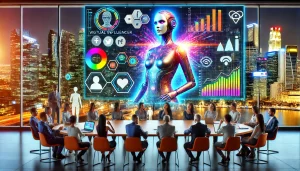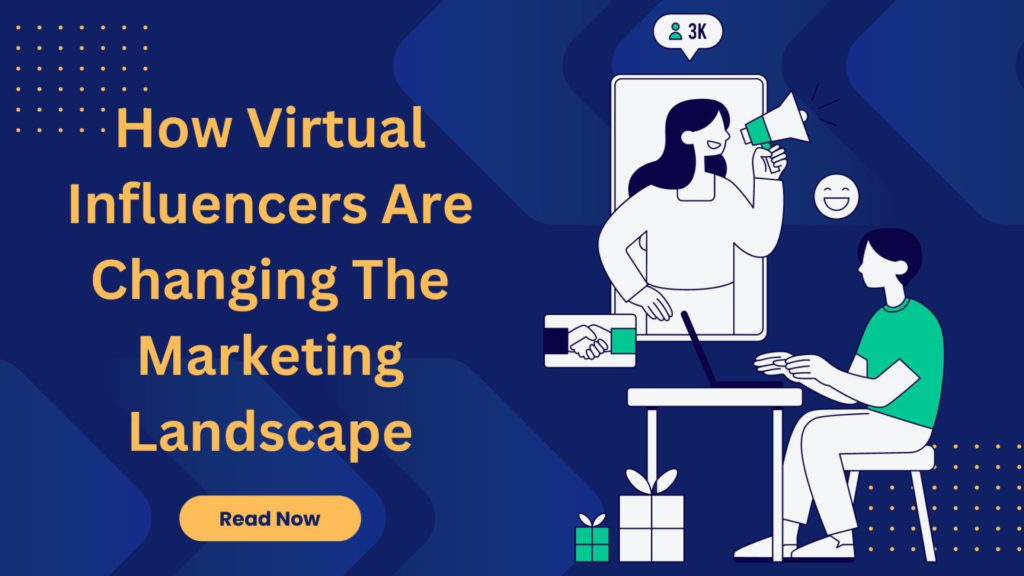The digital age has revolutionized nearly every aspect of marketing, and one of the most fascinating innovations in recent years is the rise of virtual influencers. These computer-generated characters are gaining significant traction on social media, blurring the line between reality and fiction. With brands eager to connect with consumers in more personalized and engaging ways, virtual influencers are proving to be a game-changer in the marketing world.
The Evolution of Influencer Marketing
Influencer marketing has evolved tremendously, shifting from celebrity endorsements to everyday individuals with loyal followings. The rise of social media platforms like Instagram, Facebook, and YouTube has enabled influencers to shape opinions, drive trends, and affect purchasing decisions like never before.
But now, a new kind of influencer has entered the scene—one that isn’t bound by human limitations. Virtual influencers are transforming how brands approach influencer marketing. These digital characters, designed using cutting-edge CGI, mimic real-life influencers, amassing huge followings and captivating audiences with their striking visual presence and storylines. But what exactly is fueling their popularity, and how are they changing the marketing landscape?
What Are Virtual Influencers?
Virtual influencers are computer-generated models that interact with social media users just like human influencers. They are created with photorealistic graphics and programmed personalities, engaging with their followers through posts, stories, and even direct messaging. Unlike traditional influencers, virtual influencers don’t age, need breaks, or deal with the same risks associated with human unpredictability. For brands, this provides a level of control that isn’t always achievable with real-life personalities.
Some of the most popular virtual influencers include names like Lil Miquela, Shudu, and Blawko, each with millions of followers and lucrative brand partnerships. From fashion endorsements to social justice campaigns, these digital personas are changing the rules of the game.
How Virtual Influencers Are Impacting the Marketing Landscape
Enhanced Brand Control and Consistency
One of the biggest advantages of virtual influencers is the level of control brands can exert. A virtual influencer will never have an off-day, post an inappropriate comment, or go off-script. Brands can carefully curate their interactions and maintain a consistent image without worrying about reputation management.
- Total control over content: Brands can script every word and every action, ensuring that the influencer’s message aligns perfectly with their values.
- Zero risk of controversy: Because virtual influencers are entirely controlled, there’s no risk of unapproved or potentially damaging statements.
- Longevity and flexibility: These digital characters are ageless and can be constantly updated to align with new trends or brand shifts.
Better Target Audience Engagement
Virtual influencers are carefully designed to appeal to specific demographics. Brands can tailor these digital personalities to resonate with their target audience, using data and AI-driven insights to craft personas that feel relatable and authentic to their followers.
- Data-backed personalization: Brands can create virtual influencers based on deep insights into their audience’s preferences, lifestyle, and aesthetic tastes.
- Niche audience reach: Unlike celebrities with broad appeal, virtual influencers can be fine-tuned to connect with niche communities or specific market segments.
Lower Long-term Costs
While creating a virtual influencer requires an upfront investment in technology and design, the long-term cost benefits are significant. Once developed, virtual influencers don’t require the ongoing costs associated with human influencers, such as travel, wardrobe, and compensation for their time.
- Cost-effective: No need for logistics, travel, or salaries beyond the initial creation and maintenance.
- Global scalability: A virtual influencer can be translated across multiple regions without the limitations of geography or cultural differences.
Why Are Virtual Influencers So Popular?
The appeal of the Digital Aesthetic

There is something uniquely captivating about the polished, often futuristic appearance of virtual influencers. Their flawless features and surreal aesthetics tap into a cultural fascination with the digital and the hyper-real, making them stand out in the crowded social media landscape. This distinct look allows them to create a unique brand identity that merges art, technology, and fashion.
Immersive Storytelling and Brand Narratives
Virtual influencers also excel at telling compelling stories. Their creators often develop elaborate backstories, personalities, and life events, which help them connect with their audiences on a deeper level. This storytelling potential makes them ideal for long-term brand collaborations, where their evolving character can align with a brand’s journey.
For example, Lil Miquela is not just a fashion model; she is an activist and musician, with a complex narrative that engages her followers beyond product endorsements. This level of depth allows brands to move beyond surface-level advertising and craft campaigns that feel immersive and authentic.
How Virtual Influencers Differ from Traditional Influencers
Virtual Influencers Don’t Experience Human Limitations
The most apparent difference is that virtual influencers are not human. They don’t need rest, they don’t age, and they aren’t bound by physical or geographical limitations. This offers endless possibilities for brands in terms of campaign creativity and consistency.
For example, a virtual influencer can appear in New York today and Tokyo tomorrow without the need for flights or jetlag. They can participate in a photo shoot one day and attend a digital event the next—all without breaking a sweat.
Authenticity vs. Artificial Perfection
One of the criticisms of virtual influencers is their perceived lack of authenticity. Human influencers often connect with their audiences through personal stories, vulnerability, and relatability. Virtual influencers, on the other hand, are carefully scripted and controlled, which can sometimes create a sense of artificiality.
However, many virtual influencers overcome this by sharing realistic, human-like emotions and experiences. They engage with their audience in ways that feel genuine, creating a bond that mimics the connections real influencers cultivate.
The Challenges of Virtual Influencers for Brands
Despite the exciting opportunities virtual influencers present, they come with their own set of challenges.
Ethical Considerations
There are ethical concerns about the impact of virtual influencers on mental health and body image. The flawless, hyper-realistic appearance of these digital characters may set unrealistic beauty standards, exacerbating issues that already exist with human influencers and edited photos.
Audience Skepticism
Some audiences may be wary of engaging with a non-human influencer. While younger generations might embrace the novelty, older or more traditional consumers may find it difficult to relate to a computer-generated personality. Brands must carefully assess whether their target audience is ready for this level of digital experimentation.
High Initial Investment
While virtual influencers can be more cost-effective in the long run, the initial investment can be significant. Brands must partner with skilled developers, animators, and creative teams to bring a virtual influencer to life, which can be a resource-intensive process.
How Brands Can Leverage Virtual Influencers Effectively
Virtual influencers present endless possibilities, but brands need to approach them strategically to see success. Here are some tips for leveraging these digital personalities effectively:
- Align with brand values: Ensure that your virtual influencer embodies the values and voice of your brand. This alignment is key to maintaining authenticity.
- Create immersive campaigns: Don’t just use a virtual influencer for one-off promotions. Build a storyline that allows your audience to connect with the character over time.
- Monitor audience feedback: Pay attention to how your audience reacts to the virtual influencer. If they’re not responding positively, be ready to adapt your strategy.
- Balance virtual with human: Virtual influencers work well as part of a broader strategy that includes human influencers. Use both to reach different segments of your audience.
The Future of Virtual Influencers in Marketing
The future of virtual influencers looks promising. As technology continues to advance, we can expect these digital personalities to become even more realistic, interactive, and integrated into various aspects of marketing. Brands are just scratching the surface of what’s possible with virtual influencers, and those who embrace this trend early will have a competitive advantage.
Conclusion:
Virtual influencers are not just a passing trend—they’re here to stay. As brands continue to explore the possibilities of digital marketing, virtual influencers will play an increasingly vital role in shaping consumer behavior. By leveraging these digital personalities effectively, brands can tap into new audiences, tell engaging stories, and stay ahead in an ever-evolving marketing landscape.

